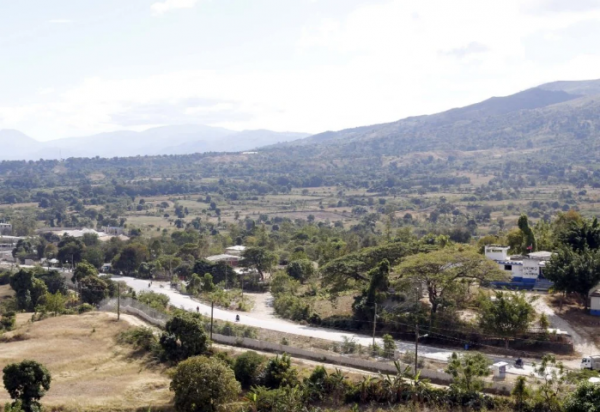
The border with Haiti between Elías Piña and Dajabón is no longer “no man’s land” as the process of reinforcing the military security by means of closed circuit television (CCTV) cameras and fencing along the border advances. Rustling of cattle, deforestation, human trafficking, drug trafficking and contraband have all been stymied by the new emphasis on protecting the border. Luis Vicioso, an Army colonel with the Intelligence Division, told reporters from El Nacional newspaper that the case of El Carrizal, in Elias Piña is an example of this stepping up of border control.
Under the control of the Armed Forces, commerce continues, but in an orderly and legal fashion. He says contraband is significantly down. This tiny place in the municipality of Pedro Santana is divided by a narrow street from Cachiman, a town in Haiti. Here, the authorities have established an Inter-Agency Office with CCTV cameras along the border out to five kilometers, supported by drones. The National Police, the DNCD, Migration, Customs and other segments of the armed forces all come together with the Army patrols in places like El Pinson, Margarita, Guaroa, Guayabal and Banica.
As reported, crime is now down in the area. Small farmers are again able to raise their livestock in relative safety, right on the border. Commerce is controlled by the Specialized Corps of Frontier Security (CESFRONT), and on normal days some 50 to 70 trucks cross the border and open markets are held on Mondays and Fridays. Cement, eggs, flour are just some of the items that are taken into Haiti. Some of the military offices attribute the reduction in the illegal border crossings to the eight-kilometer fence that was put up by the Dominican government.
Read more in Spanish:
El Nacional
22 January 2020

